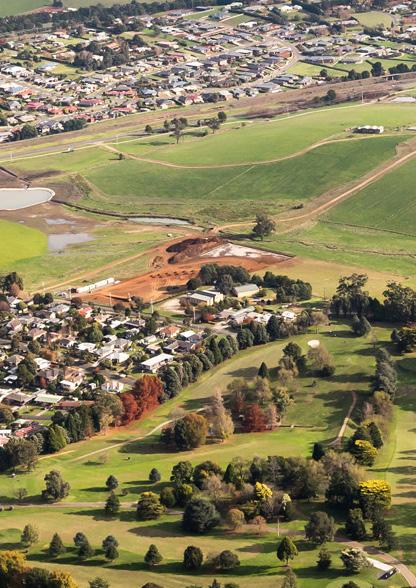
2 minute read
Development Sites
The Victorian development site market continues to be affected by higher interest rates, a moderation in residential land prices (due mostly to more incentives and rebates), low sales volumes and higher construction costs (although costs are now stabilising).
All these factors have impacted on development site purchaser demand.
The direction of interest rates remains the key factor likely to affect the development site market going forward.
While views differ on the direction of interest rates, many commentators suggest the Reserve Bank of Australia’s monetary tightening is nearing completion (or complete).
Sentiment is slowly improving as robust population growth, underpinned by overseas migration, is leading some potential development site purchasers to restart their search for suitable sites.
Headline development site values remain stable and are likely to remain stable in the foreseeable future.
Planning, engineering, servicing authorities and other delays remain key challenges.
To ensure the industry can deliver new housing projects when required, improvement in several areas including planning and engineering processes must continue.
The Victorian Government is expected to introduce a range of new housing policies in the coming months to alleviate the State’s growing housing shortage and affordability crisis.
The Victorian Government has reconfirmed its commitment to ensuring that the supply of new dwellings follows the 70/30 split (between established suburbs and growth areas respectively) as outlined in the Plan Melbourne metropolitan strategy.
This target ratio has not been achieved for several years and the Victorian Government is expected to take a more interventionist approach to ensure it is achieved in the future.
Peter Vassallo Managing Director | Development Sites p.vassallo@oliverhume.com.au
While details of any future housing policy will be crucial in understanding the implications for the future of the greenfield market, it is clear that the policy will aim to redirect population growth and new development towards Melbourne’s established areas and to medium and high-density dwellings.
A possible implication of this shift is fewer Precinct Structure Plans (PSPs) being approved every year in the greenfields.
Over the last few years around two PSPs have been approved every year.
Another implication of the shift in housing policy is PSPs taking more time to be approved.
To date, it has taken, on average, around five years for a PSP to be approved (from pre-commencement to gazettal).
In response to recent Victorian Government discussions around the direction of housing policy in the future, we have already noted a decrease in demand for PSP land which is not approved and an increase in demand for PSP land which is approved.
Accordingly, it is considered that any land offered to the market which is situated in a PSP which has been approved, or is close to being approved, should sell at a premium.
Finally, the Victorian Planning Authority (VPA) was scheduled to have released its 2023-24 business plan at the time of writing, but this has not yet occurred.
The VPA’s business plan, together with the State Government’s forthcoming housing policy (expected in September or October of this year) will provide much needed detail on the State’s strategy to address housing supply and affordability issues.





